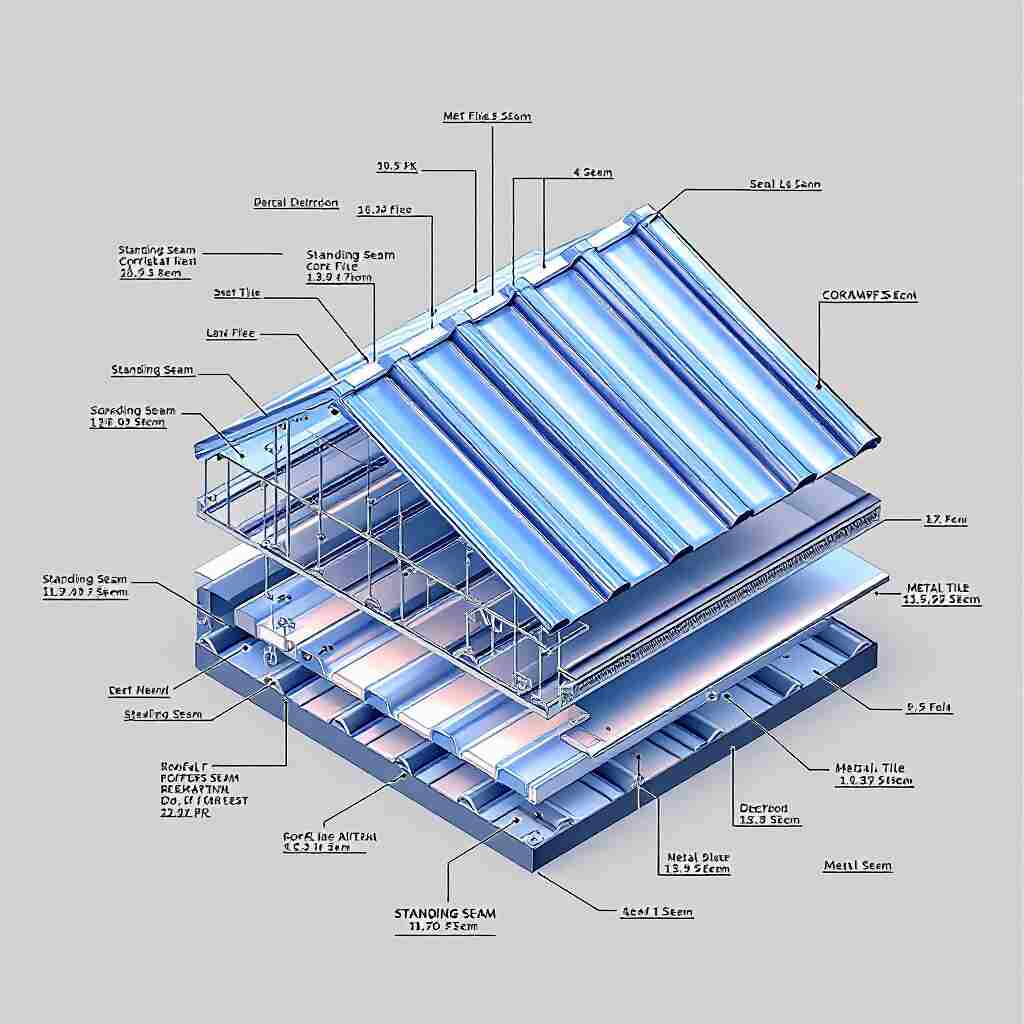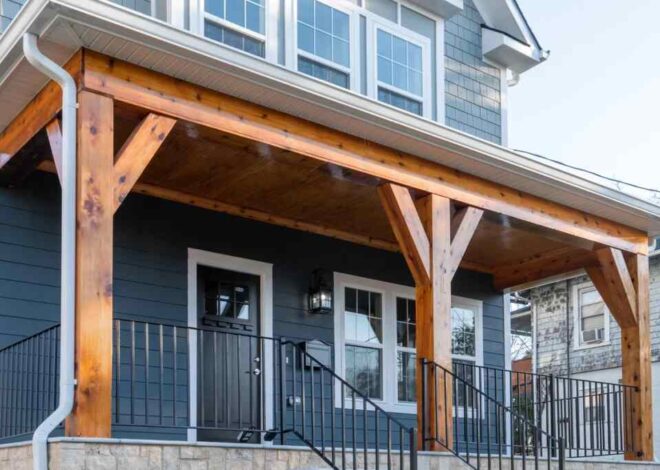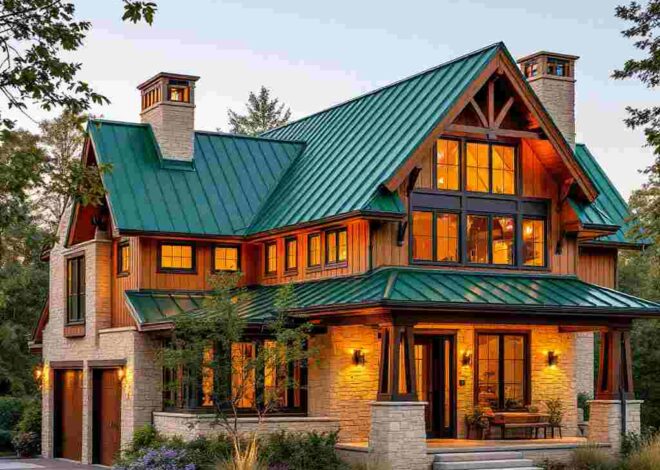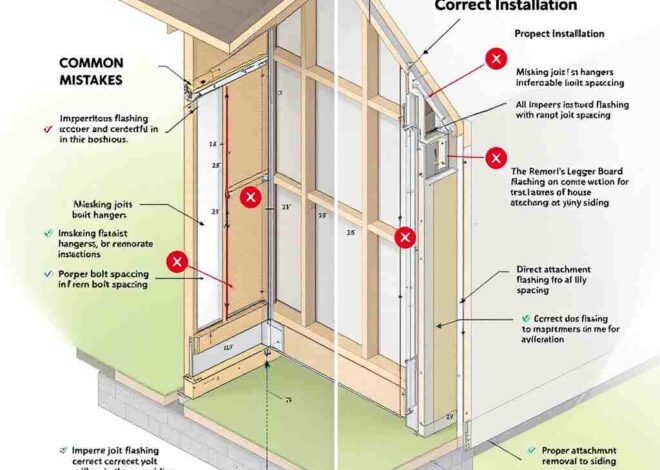
Under metal roofing, can house wrap be used?
Metal roofs are renowned for their durability, energy efficiency, and longevity, making them a popular choice for homeowners. However, one question often arises regarding installation: “Can you use house wrap under a metal roof?” This query underscores the importance of understanding the correct installation techniques to prevent potential issues such as condensation or water damage.
Understanding House Wrap

What is a House Wrap?
House wrap is a synthetic material used extensively in building construction as a moisture barrier and to enhance wind resistance. Familiar brands like Tyvek and Typar are well-known in the market. Its primary function is to protect buildings from water penetration while allowing water vapor to escape, thereby preventing mold growth and wood rot.
How Does House Wrap Work?
House wrap’s effectiveness lies in its permeability and vapor transmission properties, which make it an excellent material for preserving the envelope of a building. It is typically applied over sheathing and beneath the siding, forming a secondary defense layer against external weather elements.
| Aspect | House Wrap Under Metal Roofing |
|---|---|
| Purpose | House wrap is primarily designed as a weather-resistant barrier for walls, not roofs |
| Moisture Management | It allows water vapor to escape, preventing moisture buildup, but is less effective on roofs |
| Installation Concerns | Not typically recommended under metal roofing as it may trap water or tear easily |
| Alternatives | Roofing underlayment like synthetic materials, felt, or rubberized asphalt is preferred |
| Building Codes | Local codes may dictate the use of proper roofing underlayment rather than house wrap |
| Safety Issues | House wrap can be slippery and pose a fall hazard during installation on roofs |
| Performance | While it won’t necessarily harm the roof, it doesn’t add significant benefits under metal roofs |
Metal Roofing Basics

What is Metal Roofing?
Metal roofing comes in various forms, including standing seam and corrugated panels. These materials offer significant benefits over traditional roofing materials, such as superior durability, better energy efficiency due to reflective properties, and longer lifespans.
Common Layers Under Metal Roofing
Underneath metal roofs, several layers can be used to enhance their functionality and lifespan. These include tar paper, underlayment, and insulation, each serving a specific purpose in weather protection and energy efficiency.
You may also read (transform your outdoor space a step by step guide on how to attach a patio roof to a house with vinyl siding)
Can You Use House Wrap Under a Metal Roof?

The Argument For Using House Wrap
Using house wrap under metal roofing can offer additional moisture protection, crucial in preventing water damage and prolonging the structure’s integrity. There are documented cases where house wrap has been successfully used under metal roofs, providing evidence of its benefits.
The Argument Against Using House Wrap
However, significant risks are associated with using house wrap in this unconventional manner. The primary concern is the risk of trapping moisture between the metal roof and the wrap, leading to reduced evaporation and potential condensation issues that could compromise the roof’s integrity and the home’s indoor air quality.
| Aspect | Details | Recommendation |
|---|---|---|
| Purpose | House wrap is typically used as an air barrier and to prevent moisture intrusion in walls. On roofs, its use is less common and often debated. | Not typically recommended for roofs due to potential moisture trapping issues |
| Moisture Management | House wrap can trap moisture if not properly ventilated, which may lead to issues under metal roofing. | Use underlayment materials designed for roofs instead, which allow for better moisture management |
| Alternatives | Felt paper or synthetic underlayment are commonly used under metal roofs to manage moisture and condensation. | Recommended for use under metal roofs to prevent moisture accumulation |
| Permeability | Some house wraps have high perm ratings, but they are not designed for use under metal roofs. | Permeable underlayments are preferred for roofs to ensure moisture can escape |
| Installation Considerations | House wrap can be slippery and may not provide the necessary support or separation needed under metal roofing. | Ensure proper support and separation with materials specifically designed for metal roofs |
Alternative Solutions
Recommended Underlayments for Metal Roofing
Products like Sharkskin Ultra SA, bubble foil insulation, and various synthetic underlayments are specifically designed for use under metal roofs. These materials provide superior protection and are less likely to cause condensation issues.
Best Practices for Preventing Condensation
Implementing proper ventilation techniques and using appropriate vapor barriers or rigid foam insulation is critical in preventing condensation under metal roofs. These practices ensure that any trapped moisture can evaporate effectively, maintaining the roof’s structural integrity.
Expert Opinions and Real-Life Examples
Case Studies
We can learn from successful implementations and notable failures by examining real-life examples and gathering insights from builders using house wrap under metal roofs. These case studies provide practical insights and highlight important lessons.
Expert Recommendations
Quotes and advice from experienced roofing professionals can guide homeowners in making informed decisions about using house wrap under metal roofs. Experts generally recommend specific products and installation techniques tailored to the unique challenges of metal roofing.
Pros and Cons Summary
ProsCons
Extra moisture protection Risk of trapped water
Easy to install Not designed for horizontal surfaces
Cost-effective Potential condensation issues
Step-by-Step Guide for Installation
Following detailed installation instructions is crucial to ensure it functions correctly if you use house wrap under a metal roof. This section will include tips for ensuring proper ventilation and methods to avoid moisture traps, which are essential for maintaining the health and longevity of the roof.
Conclusion
To conclude, whether you can use house wrap under a metal roof depends on various factors, including climate, roof design, and specific building needs. Based on the evidence and expert advice, opting for other underlayment products designed for metal roofing is generally advisable. Always consult a professional before making such decisions to ensure safety and efficiency.
You may also read (which metal roof is best for a house)


